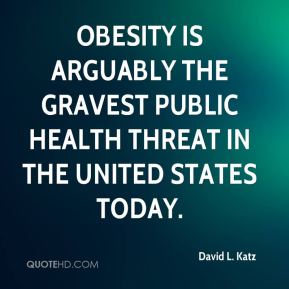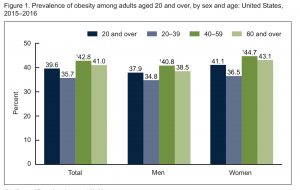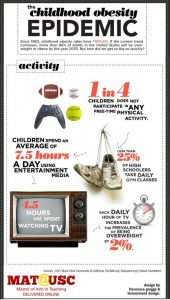
Fast food restaurant at every street corner. Packaged and processed foods becoming more and more available – even able to be delivered to our front door. Screens literally everywhere. It is not a secret that society in the United States has evolved into a more sedentary and often lazy lifestyle. We have the statistics to prove it. Almost 40 percent of adults in the US are considered obese, meaning that they have a Body Mass Index (BMI) of 30.0 or higher, according to the CDC. As with many health and societal issues in our world, it feels as though nothing can be done about it. But, we will not make any progress if we simply sit around and complain about these issues.

The cycle of obesity is very difficult to break. It effects many aspects of your body and brain, from parts of your central nervous system to certain proteins in your cells. Your body is stuck in a cycle of needing more and more, usually unhealthy, foods in order to main energy, thus creating changes to your body and lifestyle. If the obesity epidemic in the United States is this horrific, why don’t we focus more on not allowing the obesity cycle to begin? At least to the best of our ability. What I mean is with the kids. It is true that there have been a few campaigns through Michelle Obama, the NFL, and other organizations to try to get kids to be more active then they currently are. However, I don’t believe that we are doing enough. Below are some factors that contribute to obesity in children:
- Metabolism
- Community/Neighborhood
- Short sleep duration
- Genetics
- Eating and physical activity behaviors
As one can see, many of these factors are environmental. It is now uncommon to see children out together in neighborhoods simply playing. While parents and guardians are often worried about the safety of neighborhoods and streets for their young children, there are simple ways to ensure safety or find an alternative. Having parents of the neighborhood switch off watching the kids or going to the local community center during winter months and playing games in the gym are a few options. Changing the factors above is a start in the right direction to dealing with the issue of childhood obesity.

So, what’s next? Childhood obesity is arguably one of the most daunting issues to take on and try to solve. If we look at it on a small-scale level, there are a few things that we can encourage ourselves and children around us to do.
- Less screen time. This doesn’t mean a full social media cleanse. Perhaps starting with taking out 30 minutes each day and seeing what effect that has on mood and energy levels.
- Go for walks. I think that our sedentary lifestyle stems from our long work hours. This is where the responsibility of parents comes into play as well. If parents or older siblings created time in their schedule to go for walks with their children or siblings, safety during these walks would be covered.
- Participate in sports or physical activity groups to the best of your ability. The issue of money and socioeconomic classes is often a barrier to participating in sports teams for kids. However, there are plenty of recreational teams through parks districts and schools that cost much less than traveling teams and leagues.
These are not fool proof options for improvement. It is also much easier to write ideas in a simple blog post than actually implementing these strategies in daily life. However, if we can start small with our own friends and family, who knows where that can lead?